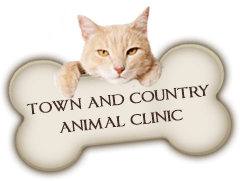
With more and more families and people having at least 1 pet in their homes, we are seeing more people travelling with their pets. When making the decision to bring your pet, there are a variety of factors you should consider. Choosing the safest, most comfortable option for your pet is very important. First we need to consider how well does your pet travel? How do they do on shorter trips within your city? Do they pant, pace or become anxious in the car? Another factor to consider is time. For instance, if you are unable to spend a lot of time with your dog, they would probably be more comfortable and happier at home than tagging along with you. As a general rule, cats are typically happier in their own homes and do not make the best travel companions.
***Keep in mind if travelling to a different country with your pet you will need to determine what requirements that country has to bring your pet into the country. This should be done at least 6 months prior to travel as some countries require documents with very specific timing of veterinary examinations, vaccinations, microchipping and blood work.***
Here are some of the key factors to remember when travelling with your pet.

A good rule of thumb is to treat your pets like you would small, young children when travelling.
DON’T LET THEM ROAM.
The safest place for your dog in the car is in a crate that has been anchored to the vehicle using a tether system or seatbelt. Dog seatbelts are helpful to prevent your dog from jumping around the car and distracting the driver, but haven’t been proven to reliably protect your dog in an accident.
CATS BELONG IN CARRIERS
Many cats do not travel well or feel comfortable during trips. Cats may try to hide, claw at their owners or get around their feet while trying to drive creating a dangerous situation. As with dogs, cats should be in a carrier that is secured to the vehicle via straps or seatbelts.
KEEP THE FRONT SEAT FOR HUMANS
Just as with children, the safest place for a pet is in the back seat. Pets in the front seat can cause a distraction or blind spot for drivers and in the event of an accident, a deployed airbag can cause serious injury to a pet (even if they are in a carrier).
ON THE SEAT, NOT ON YOUR LAP
Although it can be dangerous for your pet, it is even more dangerous for you to have your pet riding on your lap while you are driving, or sticking their head out the driver side window. And with the new distracted driving laws, this could result in a ticket for you as well.

Dogs (and cats) should be kept safely in the car. Pets who are allowed to stick their heads out of the window can be injured by particles of debris. Pets also do not have the forethought to realize they could fall out the window if they lean too far. If the driver has to suddenly hit the breaks this can cause injury to the pet or worse, cause them to fall out the window. Never transport a pet in the back of an open pickup truck.
POTTY BREAKS
Stop frequently to allow your pet to stretch their legs and go to the bathroom. Always place their collar, with tags, and leash on them before opening the door to the vehicle. An excited (or nervous) pet can bolt from the car evading your grasp no matter how quick you are. This could lead to the pet becoming lost, or worse, being hit by another vehicle.
DON’T LEAVE ME ALONE IN THE CAR
Pets should never, ever be left alone in a car. This is especially important during warm/summer months. Even if it feels “cool” out for us, for example, 72 degrees Fahrenheit outside, the temperature can reach up to 116 degrees within the hour in your car. On an 85 degree day, even with the windows cracked, the temperature in your car can reach over 100 degrees in just 10 minutes.
A quick, “5 minute” stop can easily turn into 10, 15, 20 minutes or longer if lines are long, there is a delay or you are held up for any reason. You may return to your vehicle to find your pet is suffering irreversible organ damage or even has died as a result of heat stroke.
Another factor to consider is thieves. There has been an increase in “pet-napping” as your pet is then resold to an unsuspecting family or worse, sold into the black market of dog fighting.
MEDICATION
Your veterinarian may prescribed a medication to give to your pet during travel. Occasionally a patient with have the opposite reaction to the medication; rather than becoming calm and sedate, it can cause excitement and hyperactivity. It is recommended to do a “trial run” prior to leaving for your trip. This can give you an opportunity to monitor your pet for adverse reactions to the medication.

Although travelling in a plane is often the quickest way to get to your destination, it doesn’t mean it’s the best option for your pet. The Humane Society of United States and Humane Society of Canada recommend that you do not transport your pet by air unless absolutely necessary. Air travel is particularly dangerous for animals with “pushed in” faces, such as Bulldogs, Pugs, Persian and Himalayan cats. Their short nasal passageways leave them susceptible to oxygen deprivation and heat stroke.
CHOOSE THE CABIN OVER CARGO
If you must travel with them on a plane, call the airline to decipher whether they can travel with your in the cabin. Most airlines do allow small dogs and cats in carriers for an additional fee. Make sure you call the airline ahead of time to determine the requirements to be able to adequately prepare.
When you call, here are a few questions recommended to ask:
1. Does the airline allow pets in the cabin? What are the size limitations?
2. Does the airline require health report or vaccinations? What are these requirements?
3. What is the requirement for carrier? Specific brand? Specific type? (Soft sided, hard sided, size)
4. If your pet must go in the cargo, what are the limitations, requirements for this? (Health report, vaccinations, carrier type)
CARGO HOLD
Unfortunately, animals flown in the cargo hold of airplanes are injured, lost or killed on commercial flights each year. These tragedies are often due to temperature (too hot or too cold), inadequate ventilation or mistreatment by staff. The majority of airlines require reports of all animal incidents that occur and you can look up the performance record of the airline prior to choosing them to fly.
FLYING IN THE CARGO HOLD? INCREASE THE CHANCE OF A SAFE FLIGHT
1. Use Direct Flights
2. Always travel on the same flight as your pet
3. When you board the plane, notify the captain and flight attendant that your pet is travelling in the cargo hold.
4. If travelling during summer or winter, choose flights that will accommodate extreme temperatures.
5. Fit your pet with a collar that cannot get caught in carrier doors. Ensure a proper fit that they cannot slip out of or get their paw/mouth stuck into.
6. Place identification on your pets collar AND on your pets carrier: Your Name, phone number, address, the place you are traveling to, address and phone number of destination. Your pets name and any medical conditions they have.
7. Ensure your pets nails are trimmed short to avoid getting caught or broken.
8. Have your pet become accustomed to the carrier they will be travelling, beginning as far in advance that you can. Make it a positive experience while “practicing” the use of the carrier; treats and positive reinforcement.
9. Do not give your pet medication unless prescribed by your veterinarian. A trial run of medication use should be done prior to departing to ensure your pet does not have a negative reaction to the medication.
10. Do not feed your pet for 4-6 hours prior to the trip. Give small amounts of water. Consider putting ice cubes in the water tray in your pets carrier to avoid a full bowl spilling).
11. Avoid flying during busy travel times or holidays to avoid the higher potential of rough handling during hectic moments.
12. Carry a current photograph of your pet. In the event your pet is lost, showing employees a current photo can assist in finding them.
13. When you arrive, examine your pet immediately. If anything seems wrong bring to a veterinarian immediately and get examination findings in writing.
14. Speak up if you see any mistreatment of an animals, yours or someone elses, at the airport and report to a manager.
15. Do not ship brachycephalic animals, “pushed in” faces, Pugs, Pekingese, Persian, Himalayan Cats in the cargo hold.
PASSPORT PLEASE-AIRPORT SECURITY
When you arrive at the airport your pet will have to pass through the security screening with you. Either you must have your pet securely harnessed so they can be safely x-rayed without losing control of them or request a special secondary screening which they can remain in their carrier for. Ensure you have your pets proper identification and documentation that is required easily accessible.

Via Rail lists the following information on their website:
Pets — excluding guide dogs — are not allowed in passenger cars. They must travel in the baggage car, which means they can only travel on trains that offer checked baggage service.
Only cats, dogs and small rodents are allowed aboard VIA trains. They must be carried in a rigid cage large enough for them to stand in and you must provide a padlock to keep it shut.
Please be aware that baggage cars are often heated, but that most are not air-conditioned. Your pet may therefore be exposed to high temperatures. From June 1st to September 12, baggage cars cannot transport animals due to lack of proper ventilation.
For more information you can visit www.viarail.ca/en/travel-info/baggage/travelling-with-pets
AMTRAK lists the following information on their website:
Generally, animals are not allowed on Amtrak. However, service animals are permitted in all areas where passengers are allowed. Service animals are animals that are trained to perform a specific task for the benefit of a person with a disability. Amtrak personnel may ask what task(s) the service animal performs. Carry-on pet guidelines do not pertain to passengers traveling with service animals.
For more information you can visit www.amtrak.com/service-animals-and-pet-policy
BUS TRAVEL
Greyhound has the following information on their website:
No dogs, cats, birds, or other animals will be transported. However, a service animal, trained for the purpose of accompanying a disabled person, will be permitted to travel with the disabled person at no additional charge.

If you plan on taking your pet on a cruise with you, you must check with the Cruise Line to determine if they allow pets on their ships and what their requirements are. There are some cruise ships that do allow pets to travel with rules and regulations as to where and what they can do on the ship.












